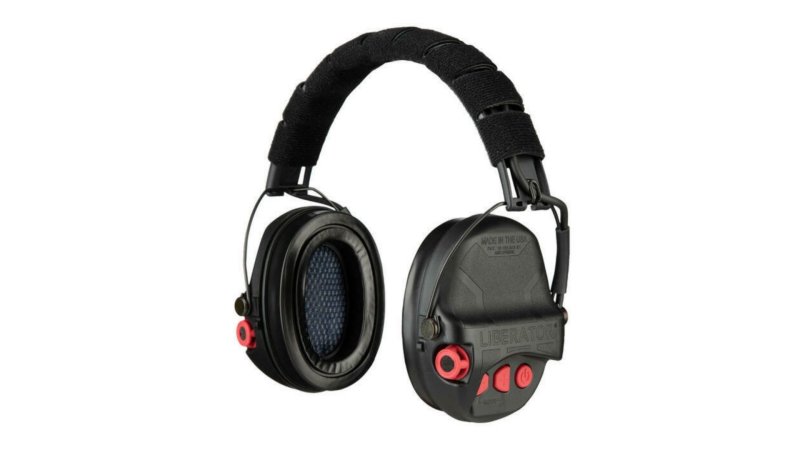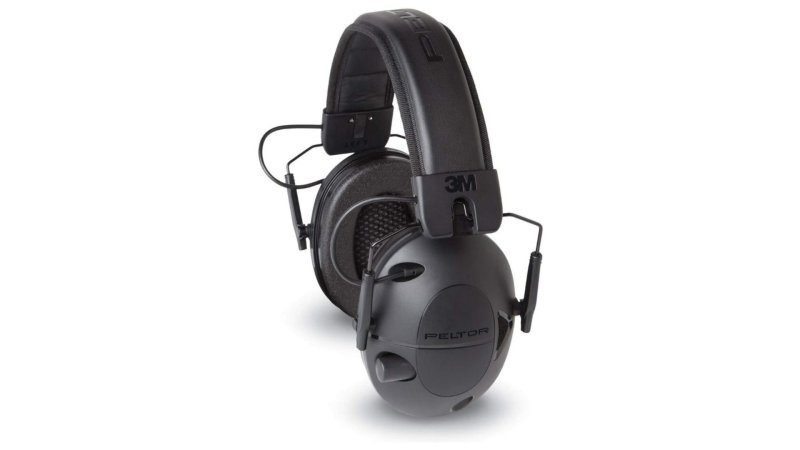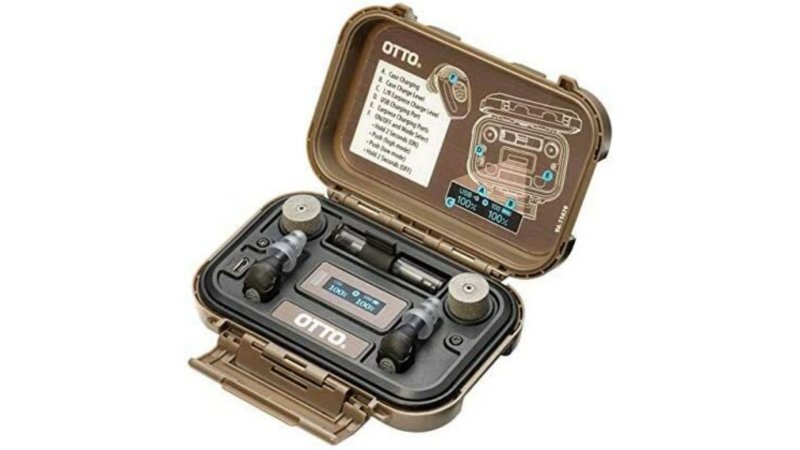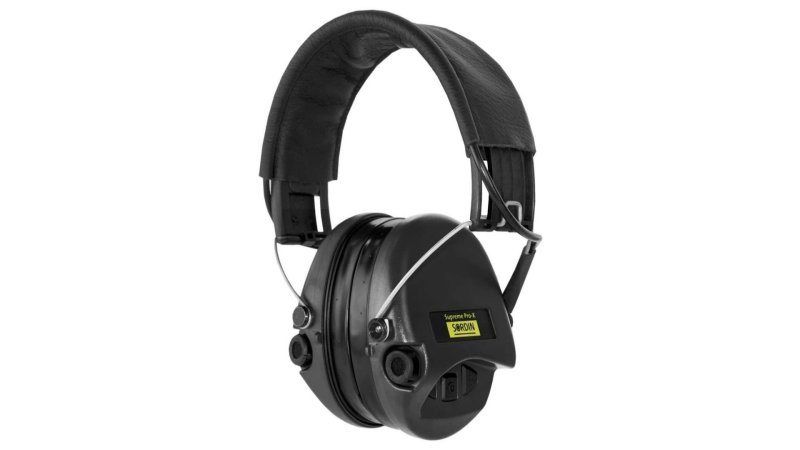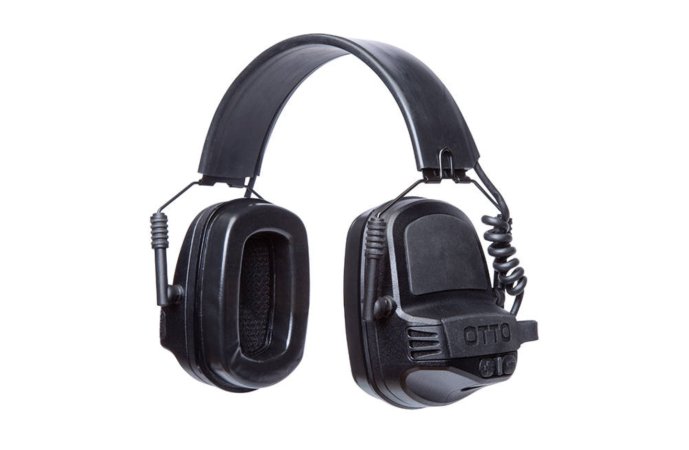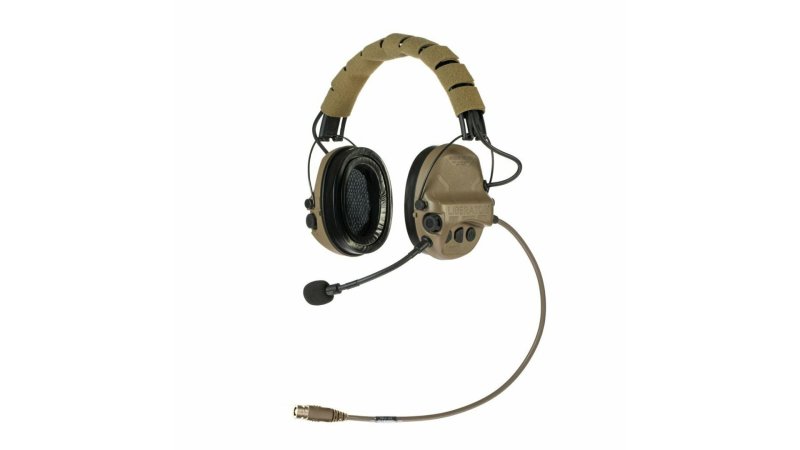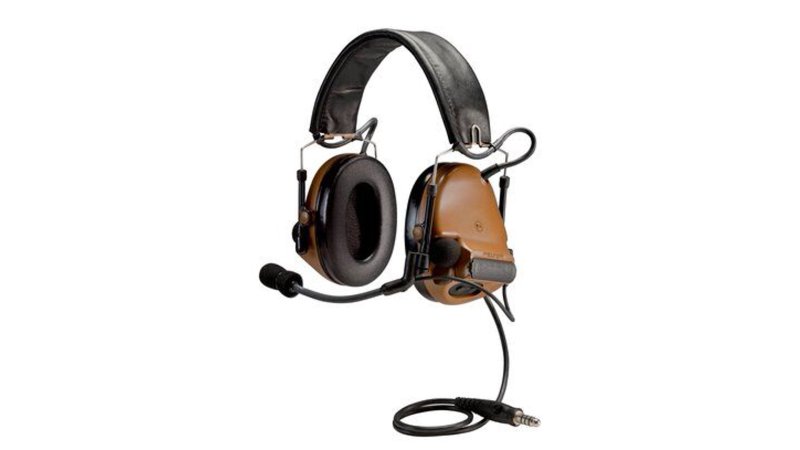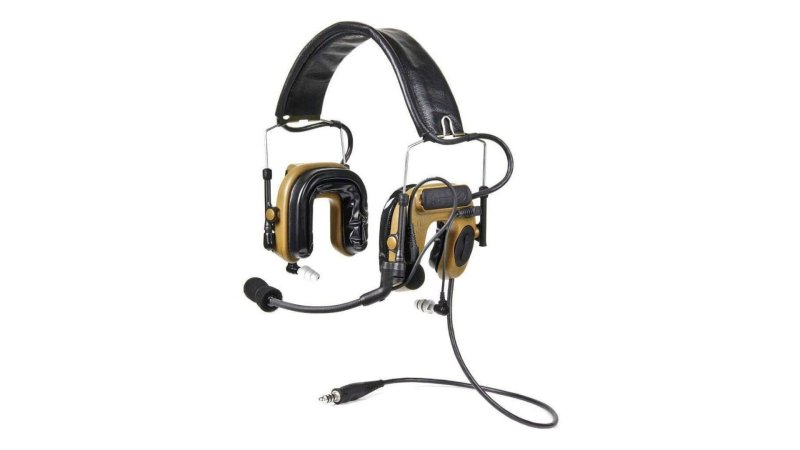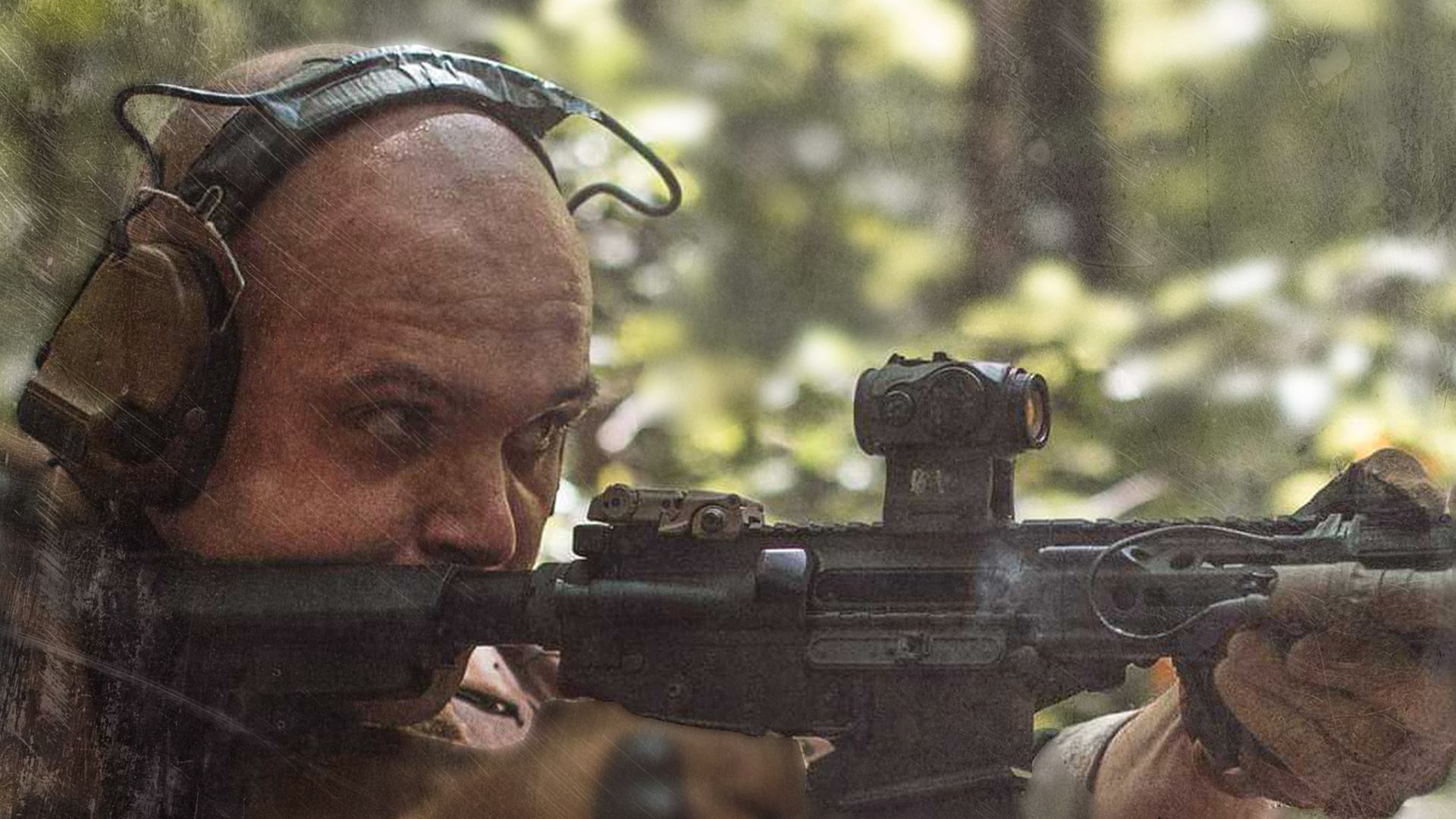

We may earn revenue from the products available on this page and participate in affiliate programs.
For years, special operations types have enjoyed powered shooting ear protection that not only shielded their ears from harsh sounds and blast pressure but also provided integrated communications and computer-enhanced bionic hearing. Regular service members often buy their own hearing protection to get in on the cool-guy factor (and save themselves from premature hearing loss). Still, unfortunately, not all options are created equal. On Amazon alone, there are legions of imitators, subpar offerings, and “American-made” headsets that are not officially certified in any way to protect your hearing.
With this in mind, Task & Purpose set out to compile an exhaustive list of the best shooting ear protection on the market, based on professional military usage, sport shooting, and expert opinions. Most powered hearing protection systems feature microphones that playback noise through headphone speakers in real-time, allowing for stereophonic situational awareness of your surroundings while protecting your hearing from damage due to gunshots, explosions, power tools, or even artillery fire. In addition to standard powered hearing protection systems, we’ve included more costly options that allow for integrated communications should you need them for military, first responder, or personal use.
All options on this list were physically evaluated for the purposes of this review and all are officially certified and ready for anything. As a rule, everything on this list is commercially available, so if you don’t see things like TEA Hi-Threats or Invisio X50s it’s because they don’t generally sell to civilians. In addition, there are several obscure options, like the full-size Otto Noizebarriers and Silynx Clarus Pro, and more common options like the Comtac V and VI that we couldn’t test just due to time constraints and availability. Finally, every pair of hearing protection on this list is officially certified to undergo use in high noise environments to include military usage, something prices will reflect accordingly —although it’s cheaper than the medical bills for hearing damage.
- Best Overall: Safariland TCI Liberator HP 2.0
- Best Value: Peltor Sport Tactical 100
- Best In-Ear: OTTO Engineering NoizeBarrier Micro
- Most Comfortable Over-Ear: Sordin Supreme Pro X LED
- Best for the Range: OTTO Engineering NoizeBarrier Range SA
- Best Comms: Safariland TCI Liberator V
- Best Value Integrated Comms: Peltor Comtac III/Comtac ACH
- Most Modular: Ops-Core AMP Communication Headset (Connectorized)
- Best In-Ear Comms: Peltor Comtac IV Hybrid Communication Headset
Best Overall
Safariland TCI Liberator HP 2.0
Pros
- Adaptable mounting
- Made in the USA
- Dual fuel
- The best sound quality on the market
Cons
- Not the slimmest form factor
- Expensive accessories
- No comms support despite comms-specific features
Product Specs
- Country of manufacture: USA
- Noise reduction level: 26 dB
- Power source: 2x AAA batteries or 1x CR123 battery
- Colors: Black with red accents, Tan with black accents, Multicam with black accents, or OD Green with black accents
Best Value
Peltor Sport Tactical 100
Pros
- Inexpensive
- Durable for most leisure shooters
- Comfortable
Cons
- Not suitable for military use
- Bare-bones
- Manual noise suppression
Product Specs
- Country of manufacture: China
- Noise reduction level: 22 dB
- Power source: 2x AAA batteries
- Colors: Gray
Best In-Ear
OTTO Engineering NoizeBarrier Micro
Pros
- Low profile fits underneath any headwear
- Extremely good sound pressure level reduction
- Does not interfere with cheek weld with rifles
Cons
- Can become uncomfortable or loose over time
- As expensive as some comms headsets without having any comms
- Made in Thailand
Product Specs
- Country of manufacture: Thailand
- Noise reduction level: 28 dB
- Power source: Rechargeable integrated batteries, case USB rechargeable
- Colors: Flat Dark Earth
Most Comfortable Over-Ear
Sordin Supreme Pro X LED
Pros
- Supremely comfortable
- Good sound quality
- Slim profile works great with helmets
Cons
- Frustrating battery compartment
- Inflexible mounting options
- Low noise reduction rate
Product Specs
- Country of manufacture: Sweden
- Noise reduction level: 18 dB
- Power source: 2x AAA batteries
- Colors: OD Green, Black, Multicam, Blaze Orange, Orange Hunting Camo
Best for the Range
OTTO Engineering NoizeBarrier Range SA
Pros
- Superior hearing resolution in high noise environments
- Comfortable
- Highly articulated mounting
Cons
- Heavy and large
- Lower noise reduction rate
- Mount joints can pop out
Product Specs
- Country of manufacture: USA
- oise reduction level: 23 dB
- Power source: 2x AAA batteries
- Colors: Black, Flat Dark Earth
Best Comms
Safariland TCI Liberator V
Pros
- Outstanding sound quality
- Flexible mounting and connection options
- Durable against physical and electronic hazards
Cons
- Hardwired mic and downlead
- Only Available from Safariland
- Connection flexibility limited by proprietary parts and high costs
Product Specs
- Country of manufacture: USA
- Noise reduction level: 26 dB
- Power source: 2x AAAs or 1x CR123
- Colors: Flat Dark Earth, OD Green, Black
Best Value Integrated Comms
Peltor Comtac III/Comtac ACH
Pros
- Proven by widespread use
- Easily available secondhand
- Readily available spare part
Cons
- Less-than-stellar sound reduction
- Widespread durability issues
- Mounting solutions are as fragile as the headsets themselves
Product Specs
- Country of manufacture: Sweden/USA
- Noise reduction level: 23 dB
- Power source: 2x AAAs
- Colors: Coyote Brown, OD Green, Black
Most Modular
Ops-Core AMP Communication Headset (Connectorized)
Pros
- Outstanding sound quality
- Customizable mounting and connection options
- Maximum 34 dB of noise reduction
Cons
- Cost-prohibitive for most users
- Fragile mounting clamps
- Possible discomfort when used with NFMI earplugs
Product Specs
- Country of manufacture: Variable, Berry Compliant available upon request
- Noise reduction level: 22 dB, 34 with the separately sold NFMI earplugs
- Power source: 2x AAAs
- Colors: Tan 499, Foliage Green, Black, Urban Gray
Best In-Ear Comms
Peltor Comtac IV Hybrid Communication Headset
Pros
- Outstandingly lightweight
- The best blend of breathability and microphone clarity
- Familiar package
Cons
- A mess of wires
- Fragile mounting clamps
- Noise reduction is the same as some over-ear options
Product Specs
- Country of manufacture: Sweden/USA
- Noise reduction level: 26 dB
- Power source: 2x AAAs
- Colors: Coyote Brown
Why you should trust us
For this article, I sought out every variant of hearing protection and powered headset that I could find to get an exhaustive list of most of the trusted variants on the market today.
In addition to having years of experience with powered hearing protection, and taking every set on this list either to the field or to the firing range, I interviewed sales representatives and product developers from many of the companies that make these products via email or over the phone. Safariland in particular provided Task & Purpose with complete technical documentation from their safety certification testing procedures carried out in a third-party lab.
In terms of communications headsets, I’m a stickler for good-quality headsets, given the importance of clear communication in any sort of professional environment, and so I evaluated the comms-capable headsets using a civilian radio that offered six-pin MBITR connector capabilities so that I could test these with their intended push-to-talk units. Finally, I tested these under a range of headwear to ensure that I could adequately comment on their comfortability.
Types of shooting ear protection
Shooting ear protection comes in four major categories: unpowered earplugs, unpowered earmuffs, powered in-ear, and powered over-the-ear, also known as “circumaural” hearing protection. These options bring their specific capabilities to the table. In general, unpowered hearing protection will be cheaper and can be a good option for doubling up on hearing protection in high-noise areas, such as those on a flight line or near loud explosions. In terms of powered hearing protection, over-the-ear will generally be cheaper than in-ear options, as the latter requires more complicated and small circuitry to function.
Unpowered earplugs
Unpowered earplugs are the shooting hearing protection most people are familiar with. They usually come in the form of shapeable foam earplugs and are often inexpensive (in fact, most ranges give them out for free). However, these can range from “foamies” to options like the Surefire Sonic Defenders, and specialized musician’s earplugs that lower the overall sound level without muffling the sound, which allows you to still have some clarity to your hearing even with these on.
These are a great option for those who want to double up under a powered headset, which is something I commonly see people on flight lines do, or the cannoneers at my unit, standing next to their M777A2 howitzers. Additionally, many shooters prefer these because they do not disrupt your cheek weld at all when shouldering a rifle. Unfortunately, these have issues with coming loose or popping out for some people and can get lost easily due to their small size.
Unpowered earmuffs
Unpowered earmuff-type hearing protection provides a more secure level of hearing protection than unpowered earplugs. They’re quicker and easier to take on and off and require none of the fidgeting needed to stick earplugs in. In general, these offer similar sound reduction levels to earplugs, but some can even rival high-end earplugs with noise reduction rates of 30 dB or more. The downside to these is that they can be bulky, and prevent you from hearing, muffling nearly everything and offering no real specialized options to allow some sound in, but not others.
Powered in-ear
Powered in-ear hearing protection is an option for people who hate sweaty ears. They allow you to be aware of your surroundings without having to use cumbersome earmuffs. In general, these will be more expensive, due to the smaller circuitry needed to provide the ambient hearing features in such a tiny package.
Additionally, many have higher noise reduction rates than powered over-the-ear headsets, due to their use of multi-flanged or other specialized ear tips, which allow them to physically block sound better. They offer the same ease of use as unpowered earplugs but also the same drawbacks.
Powered over-the-ear
Powered over-the-ear hearing protection is what most people think of when they think of powered hearing protection, given the popularity of options like Peltor Comtacs. They offer auditory situational awareness while offering much the same fit as conventional earmuffs. They’re generally the go-to option for communication headsets as well, offering both hearing protection and a convenient way to communicate via radio. Many of them can be mounted to a high-cut helmet for easy wear, and some even offer options to readily switch between headband, neckband, and helmet mount configurations. The downside to these is that like conventional earmuffs, they can get very hot in the summer months, which can lead to user discomfort.
Key features of shooting ear protection
Decibels
A decibel is a measure of sound that gauges the energy of a sound wave on a logarithmic scale. What this means in layperson’s terms is that a sound that is 80 decibels isn’t one louder than something that is 79 dB, but rather 800 times louder than a sound that is 0 dB. Every time the number increases by 10, that’s a tenfold increase over the previous factor of 10.
Additionally, a 3 dB increase doubles the perceptible sonic energy and can be immediately noticeable and the difference between prolonged and immediate hearing damage. Some key sound pressure levels to know are normal speech (60 dB), most gas-powered leaf blowers (80dB), loud amplified music (110 dB), the threshold of instantaneous hearing damage (120 dB), many gunshots (130-145 dB) and a space shuttle taking off (170 dB). So a gunshot is 1,300 times louder than the quietest sound that people can hear.
Noise Reduction Rate (NRR)
Noise Reduction Rate is the U.S. standard for measuring how much the energy of a sound wave is reduced by a hearing protection device measured in decibels. This number tells you how much the hearing protection in question will protect your hearing and should be considered alongside the noise levels you intend to work with.
‘Hear through’ capability
One of the key reasons to use powered hearing protection is the “hear through” capability. Known by many other names, hear-through allows you to semi-naturally perceive your surroundings as if you had your ears uncovered by using microphones on the outside of the headphones, which simulate your ear canals. Powered hearing protection will have at least one microphone on each ear. However, more recent and more advanced versions like the Peltor Comtac VI have microphones on the front and back of each earcup. One of the most important aspects of hear through capability is that it compresses the human hearing spectrum down to a relatively narrow span of decibels, so that loud noises are much closer to quiet sounds and do not damage your hearing. Older hearing protection, as well as the vast majority of inexpensive copycat ear protection on sites like Amazon, will simply cut out the audio for a split second every time that there’s a loud noise, which is not preferable.
Benefits of shooting ear protection
Increased situational awareness
By using the hear-through capability found on powered hearing protection, you don’t have to sacrifice situational awareness while protecting your ears, allowing you to carry on conversations, hear movement around you, and generally have good spatial perception based on sound.
Long-term comfort
Good quality hearing protection will feature comfort-enhancing items such as gel earcups, padded headbands, and ergonomically formed designs so that you won’t feel tempted to do without your hearing protection in the name of comfort.
Comms capability
Many of the higher-end hearing protection on this list offer comms integration, which means that they can be used as a radio headset. Rather than having to hold a hand mic up to your head next to the hear through microphone, or pushing your hearing protection away for a second to listen in, they allow you to have hearing protection that maintains situational awareness and radio clarity without sacrificing safety.
Pricing considerations for shooting ear protection
Low-end
Low-end hearing protection will generally either be unpowered or powered by primitive circuitry that lacks a lot of the creature comforts of higher-end models. At this price point, you’ll likely find a lot of low-quality Chinese-made copies of higher-end headsets such as Comtacs or AMPs, and these are not safe to use for any sort of serious shooting use.
Mid-range
This is where you’ll find many of your no-comms options and some used comms options. Generally, these will be of great quality, designed specifically to be used as hearing protection in a tactical or professional environment. This is where to aim if you’re a serious shooter and want hearing protection that will last you years.
High-end
Professionals and LARPers only! High-end hearing protection is aimed squarely at the military and tactical law enforcement market, often designed to withstand severe damage and rough use and usually featuring some sort of comms integration. These will be executed to a very high level of finishing, generally, and usually feature some highly innovative features.
How we chose our top picks
Out of the myriad headsets that we evaluated, we distilled our selections down to our best overall, best budget, and best in-ear to capture the three major requirements that many shooters have for their hearing protection. We want to serve those who want to buy once and cry once, those who are on a budget, and those who live in extremely hot or humid environments or have other special considerations that would require them to have in-ear hearing protection. All of these options were tested by wearing them for prolonged periods, taking them to the range, and interviewing long-term users and subject-matter experts. The other options on this list are no less curated, they just fit into a much more niche capacity and therefore aren’t going to be right for everyone.
FAQs on shooting ear protection
You’ve got questions, Task & Purpose has answers.
Q: Are ear muffs better than earplugs?
A: Generally, un-powered earmuff style hearing protection can offer more sound protection than simple earplugs. However, in terms of powered hearing protection, the opposite is usually true, just due to how they seal the ear from sound and the requirement for the powered hearing protection to have hear-through capability.
Q: What is the best ear protection for shooting ranges?
A: Most hearing protection will work for outdoor ranges since the open air and lowered risk of gunshots reverberating make them generally quieter. However, if you shoot primarily indoors, the Safariland Liberator HP offers a very high, officially tested sound protection level that will protect your ears from reverberating gunshots in a confined space.
Q: What is the highest dB reduction level for earplugs?
A: Generally, most earplugs have a noise reduction rate that tops out in the low 30s, which is much higher than many powered hearing protection options can offer. However, this can be enhanced by doubling up, or by using powered hearing protection that offers active noise canceling, such as the Liberator HPs, which aren’t earplugs.
